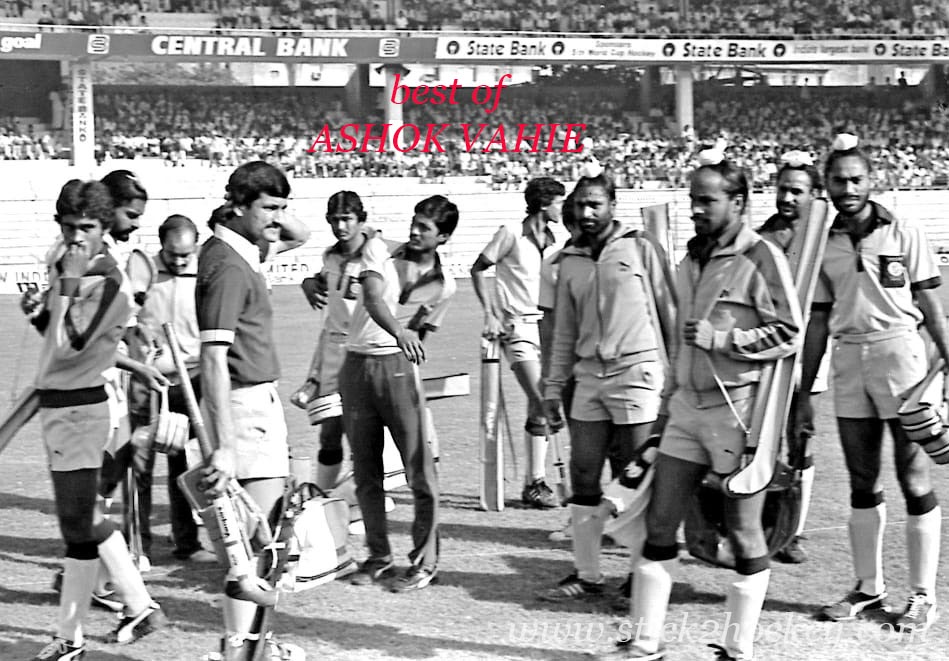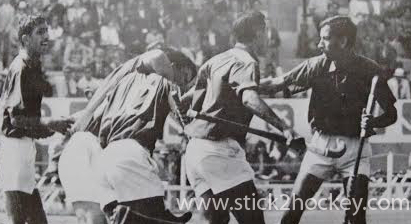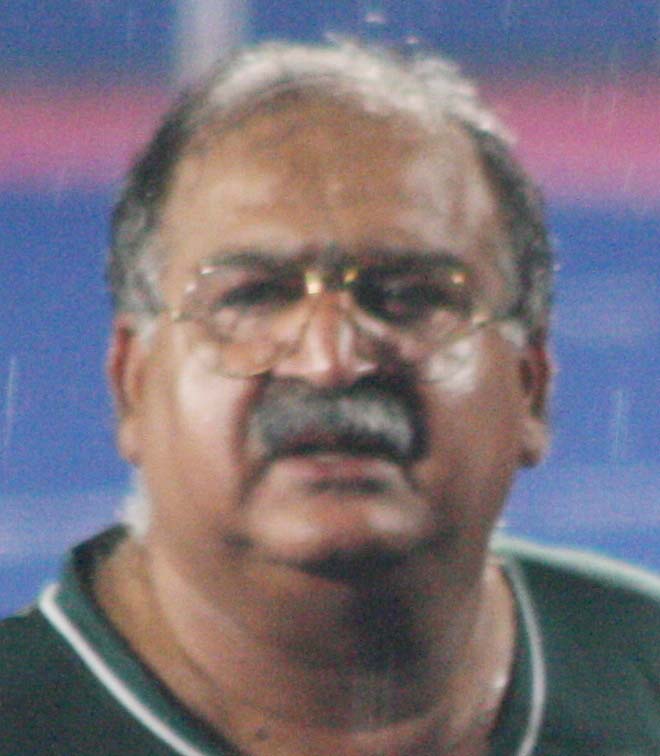Share
39 years ago on this day, Pakistan defended its World Cup title, that too on Indian soil. The last World Cup on grass also saw many sweeping changes – EDITOR
ERROL D’CRUZ
You could say that hockey endorsed tennis star Ivan Lendl’s theory that grass is for cows long before he uttered the words in 1982. The sport decided years prior that plastic was the way to go, given that hockey needs an even surface given that the ball is hard and stick skills need to be close and precise. A natural grass pitch is tough and expensive to maintain especially in colder climes where rain and snow wreaked havoc.
So it came to pass. After artificial pitches made their debut at the 1975 Pre-Olympic tournament in Montreal (and at the Games proper a year later in the same city), the 1982 Mumbai World Cup, the final of which was played on January 12, was the last global major on natural surfaces.
Pakistan, playing absolutely at home on a grass pitch, destroyed the field while storming to their third World Cup title after beating West Germany 3-1 in the final, thereby retaining the title they won four years earlier in Buenos Aires, also on lush green pitches.
After that, save an interlude or two in terms of four-nation events in the Arabian Gulf in 1986, tournaments involving the top-ranked nations took place on a variety of artificial pitches that proliferated during the 1980s.

1981-1982 World Cup, Mumbai. Indian players getting ready for a match. (l-r): Md. Shahid at right extreme, behind him is captain Surjit Singh. Also seen are Mervyn Fernandis, SS Sodhi, Rajinder Singh Sr. Ravinder Pal Singh, MK Kaushik, MM Somaya, Gurmail, Onkar and MR Negi
Ironically, the 1982 World Cup introduced sweeping rule changes effected on September 1, 1981 which were to have a profound impact on the game in the artificial turf era.
The true, firm pitches of Mumbai along with the new rules helped the game take sure steps towards making a statement about its potential of becoming a spectator and television sport. But that was about it for grass. Plastic took over. So too equipment and apparel to go along. And, not least, playing styles and formations. Changes also came thick and fast in terms of tactics, apparel and protective equipment. Not to mention further rule changes as the game embraced life on artificial turf.
Pakistan’s dominant triumph emanated from their all-out attack that included the five forwards in the traditional 5-3-2 formation, not quite European teams’ cup of tea. Except for West Germany in 1972, every Olympic champion until then used the pyramid formation. But things were about to change.
India and Pakistan were to wise up to changes, albeit slowly and before the next Olympics in 1984, both Asian teams were to switch to a withdrawn forward formation.

Pakistan established its supremacy over India since 1960s and it reflected in Mumbai WC too
India innovated under the iconic Balkishen Singh’s tutelage when he used Hardeep Singh as the fourth half. Pakistan were to do so under duress when their campaign went awry at the 1982 Esanda international tournament in Melbourne. When the then World Cup champions met England in the cross-over classification match, injuries forced them to withdraw a forward. The Green Shirts won the match 2-1 and left the door open to use the formation again.
The pyramid formation, however, lingered on for a while. Pakistan, who won the 1984 Olympic gold medal in Los Angeles and Great Britain who emerged supreme at Seoul 1988 largely utilized the five-forward pattern.
With the dynamics of the game changing rapidly and Europe’s return to the top top podium after a 17-year hiatus when the Dutch won the 1990 Lahore World Cup and the Germans the 1992 Barcelona Olympic gold medal, the traditional format inevitably bid adieu.
Mumbai also provided a glimpse into the future when it came to goalkeeping apparel.
Vladimir Pleshakov, the Soviet Union goalkeeper, sported a wired mask and protective equipment including enhanced padding and matched them with tactics that were seen for the first time and viewed cynically in some quarters.
He rushed out at penalty corners and lay prostrate, perpendicular to the striker to prevent a shot hitting the 18 inch backboards – mandatory for a goal to be allowed as per the rules.

Akhtar Rasool led Pak to title in Mumbai World Cup
It was to prove controversial as some argued that such a tactic was considered against the spirit of the game. Others viewed it as dangerous to the goalkeeper and Pleshakov himself writhed in pain after stopping a full-blooded strike that hurt despite his extra padding.
The FIH rules board grappled with the situation after the Mumbai tournament, even prohibiting the goalkeeper to go down before the first shot at a penalty corner was taken. It only led to more controversy – which came first? The shot or the goalkeeper’s drop to the turf?
After much ambiguity, goalkeepers were forced to stay on their feet with high flicks being allowed as a means of scoring.
In the early 1990s, when the dreaded drag flick made its advent, lying flat on the turf at a PC became the last thing on a goalkeeper’s mind.
The Mumbai World Cup would also be remembered for sweeping rule changes that presented themselves for the first time in a global major event.
On September 1, 1981, the FIH Rules Board effected several rule changes which were used for the first time at a major tournament. Chiefly, the bully-off was abolished much to the chagrin of the traditionalists. In came the back-push from the centre spot. The bully-off more often than not resulted in a repeat and a waste of time. It was good riddance and no apologies to the purists!
Other bright changes to restart from the sidelines brought in the hit-in instead of the annoying and fastidious push-ins. Also, the long corner was modified to a free hit from the corner flag. It revealed how much ground hockey had lost over the decades to archaic rules that prolonged stoppages and came in the way of the sport enhancing its spectator appeal.
One rule, though, seemed ludicrous. The 20-stroke tie-breaker made its advent at the World Cup and was used in the semi-final between West Germany and Australia which ended 3-3 after extra-time.

India has about 300 turf grounds for hockey
Even more ridiculous was the stipulation to continue taking penalty strokes even after Germany had achieved an unassailable lead – ostensibly to tide over a protest if any by the losing team!
The rule was dropped a few years down the line and back came the 10-stroke tie-breaker. Change surely was a constant when it came to the hockey rules and, radically, the hand stop was abolished at the penalty corner in September 1982. In 1992, offside was abolished, rolling substitutions came into being and modification to the PC routine gave birth to the drag-flicker.
By the next World Cup at Willesden, London, 1986, artificial surfaces had already become a fixture calling for changes in the material of the stick – from the tradition mulberry shaft to fibreglass and composite material.
Goalkeepers resembled astronauts with their elaborate protective apparel. For outfield players, helmets, mouth guards, gloves and, later, face masks for defenders at penalty corners became the order of the day.
The ball ceased to be leather, giving way to a plastic-rubber combine with a dimpled surface.
Signficantly also, the power equations changed dramatically with traditional giants India and Pakistan contesting the wooden spoon match (won by the latter) at Willesden 1986 instead of the gold medal encounter that not so long ago seemed to be their preserve.


